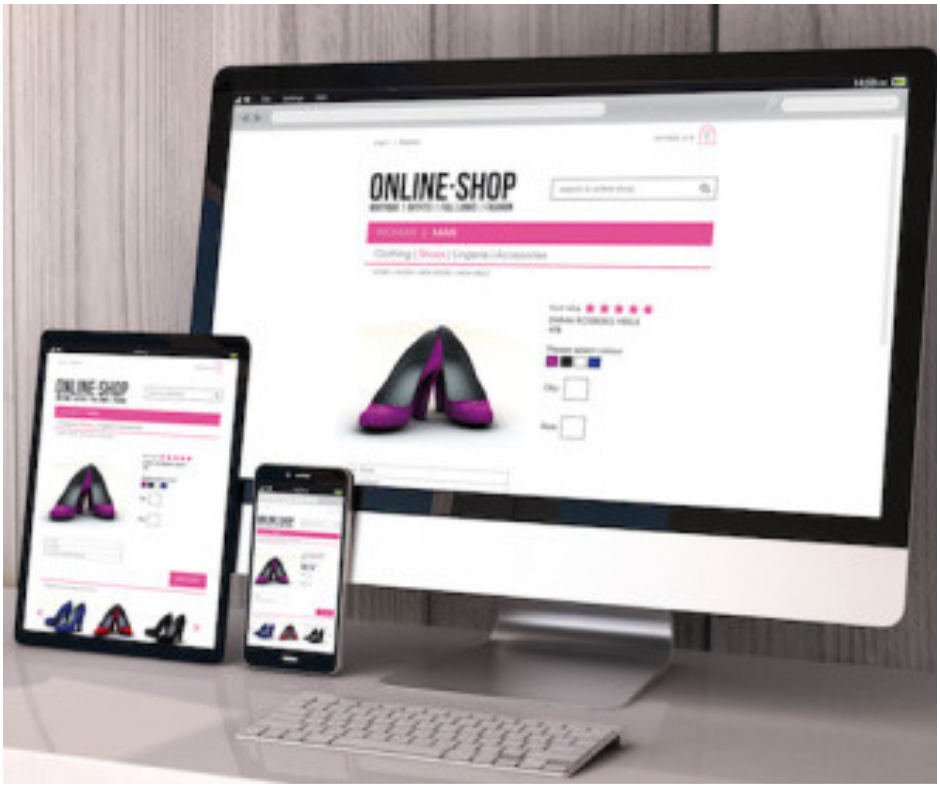From Start to Profit: How to Set Up an eCommerce Store and Generate Sales
26 July 2017
Setting up an ecommerce store is an increasingly popular way of making money online.
If you’re interested in getting into the action and setting up your own ecommerce store, you might not know where to begin.
If that sounds like you – take a breath and relax.
In this post, we’re going to examine the steps that you need to go through, in order to set up a profitable ecommerce store.
We’ll go through how you can actually set up an ecommerce store, but also the strategies you can use to generate sales.
By the end of this post, you’ll have a blueprint that you can use to set up your very own profitable ecommerce store.
Let’s begin!
Deciding what you’re going to be selling
You don’t have an ecommerce store if you don’t have anything to sell.
So, before you do anything else, you must first decide what you’re going to be selling.
There are two ways you can approach this challenge.
- You can create something that ‘scratches your own itch.’
- You can take something that already exists and make something better, while also doing a better job of marketing it.
In this post, we’re going to focus on option two, which involves creating something better, while also marketing it better.
This option can be simpler for newbies, because you’re taking a lot of the risk out of the situation.
After all, you don’t need to do as much market research, because you already have proof that an existing product is already succeeding.
Let’s go through the process, then, of finding a product.
The niche you choose is going to depend on what you’re familiar with.
Ideally, you want to sell something in a niche you have familiarity with, as you’ll be better able to connect with the market you’re trying to sell to.
This is important, because you’re going to be writing copy. If you want your copy to be good, it needs to connect with your target audience.
Let’s say I’m looking to start an ecommerce business dedicated to selling premium ($20+) paper notebooks.
First, I need to take a look at what is already selling.
And, I can do that by taking a look at Amazon – the king of all ecommerce stores.
If I type in ‘notebooks,’ I’m presented with the following products. I set the price range between $25-$50, so that I can narrow down the category. I’ve also sorted the page by ‘Avg. customer review.’

I now need to browse this page and see if there are any products that look interesting.
From the screenshot above, I can see that there is a ‘Whiteboard Notebook,’ that might be worth taking a look at.
Here are some other ideas that might be worth investigating.

From what I can see, the top notebooks have high quality covers and thick paper inside of them. On top of that, they also seem to follow a certain theme.
For example, here is the description for one of the notebooks that I found.

So, we have some inspiration, in terms of where we could take this.
Now we need to find out how we could source such a product.
Sourcing Products
For many people in the ecommerce space, the best way to source products is by using a site called Alibaba.
Alibaba is a good place to check out, considering that 12.7 billion orders have taken place in its marketplace in the past.
Using Alibaba, you can find suppliers for an incredible variety of products.
To do that, head over to Alibaba.com
We then need to type in a keyword that is related to what we we’re trying create.
Let’s stick with the example from before, ‘premium notebooks.’

As you can see, you’re now presented with a list of suppliers, each of which provide a different style of notebook.
Now, there’s a good chance that the first company I come across isn’t going to be able to meet my requirements.
So, I’ll need to contact quite a few of them to see what they can do for me.
However, before you think about doing this, it is important that you first get crystal clear about what your requirements are.
If you are not, then you will be wasting everyone’s time, as the prices quoted to you by suppliers will be very closely tied with the specifications you provide.
And, if you change your specifications, the prices could change dramatically – not something you want to experience right at the last minute.
So, make sure that you know exactly what you want, ahead of time.
With a notebook, I’ll need to make sure that they can create a notebook with the paper thickness I want, but also with the number of pages I want, too.
I’ll also want to see if they can take my designs and use them as front covers.
Thankfully, Alibaba makes it easy to conduct some due diligence, regarding the seller’s who have listings on the site. You’ll often see some stats on each of the product pages you take a look at.
Below is an example of what was shown for one seller, who looked like a good notebook supplier.

The icon on the upper left lets me know that they’ve been a ‘Gold Sup
plier,’ for six years.

In the Alibaba ecosystem, a Gold Supplier signifies that a business that is serious about trading with other companies internationally.
Companies have to pay for this recognition, which provides extra reassurance.
You’ll also see another icon, in the top right hand corner, that shows that the seller has signed up for the ‘Trade Assurance,’ program – protecting you, should anything go wrong.
Provided that you see these two things, it may be worthwhile to reach out to this seller to see what they can provide.
A few key things you’ll want to discuss are the payment terms (and how much deposit is required)and if any sample products can be sent over.
Ordering sample products, before you make a big order, is preferred, as you’ll be able to inspect build quality and alsoevaluate how well you can work with the supplier in question.
Setting up your store
Once you have taken a look at some suppliers and you’ve arranged how you’re going to source your products, you then need to set up your store.
You can either display your products on Amazon or you can set up a Shopify store.
First, let’s take a look at posting your products on Amazon.
Scroll to the bottom of the Amazon homepage, and select ‘Sell on Amazon.’

Then sign up to their selling service.
You can decide to sign up as an ‘individual seller,’ but becoming a professional seller might be a better option in the long term.

Once you’ve set up an account and verified your identity, you’ll then need to go about listing your product.
Thankfully, Amazon has a helpful sidebar that aids you in getting this done.

Here is a brief overview, provided by Amazon, that details the process of selling something, once you are ready to do so.

To get the ball rolling, click on ‘Inventory,’ and then select ‘Add a Product.’

Then, search for the item you’re looking to sell (or select ‘Create a new product listing’) and follow the checklist.




 Whatsapp Us +6011 1144 5462
Whatsapp Us +6011 1144 5462



